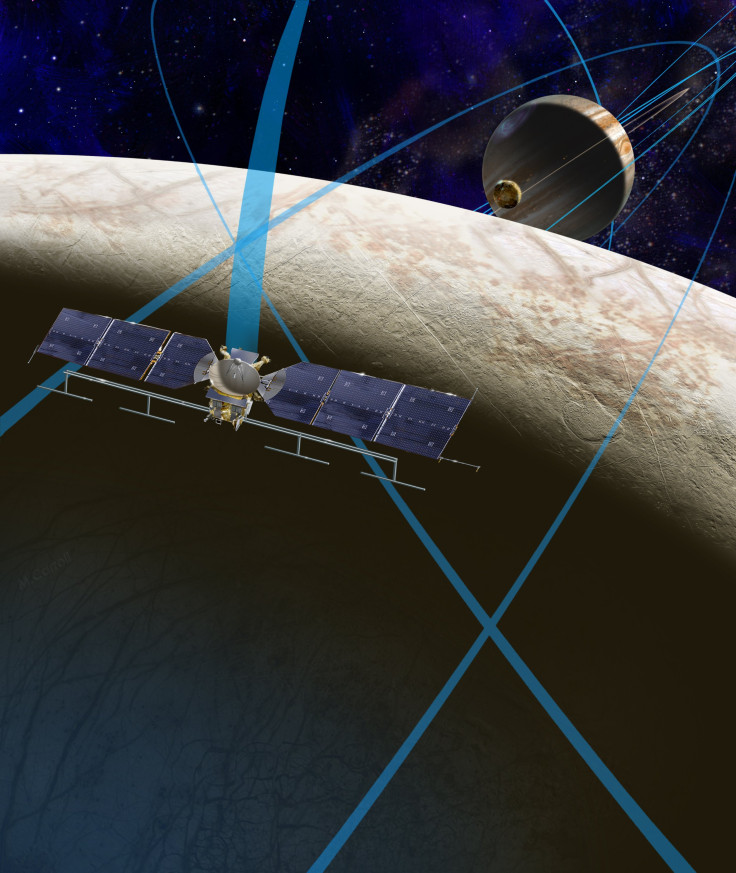Europa Exploration: NASA Tests Underwater Drone To Investigate Jupiter's Frozen Moon For Alien Life [VIDEO]

NASA is sending a drone to the moon. No, not the gray rock resembling a piece of cheese that orbits Earth. Instead, the U.S. space agency is preparing to launch an autonomous vehicle to Europa, a moon of Jupiter that’s almost entirely covered in water.
NASA’s Buoyant Rover for Under Ice Exploration (Bruie) is undergoing its final rounds of testing in a Los Angeles aquarium before it makes the 390.4-million mile trip to Europa. Scientists believe that because the moon is covered by ice there’s almost certainly a sea of water beneath it -- and water means the possibility of extraterrestrial life. There’s no firm launch date (there are likely still years of development ahead) but word that the space agency is putting Bruie through another round of testing is the latest step forward for a trip to Europa, a goal that’s frequently ranked at the top of NASA’s priority list.
“A lot of what we do in deep space is applicable to the ocean,” Andy Klesh, principal investigator for the rover at NASA’s Jet Propulsion Laboratory, said in an agency statement. “This is an early prototype for vehicles that could one day go to Europa and other planetary bodies with a liquid ocean covered by ice. It’s ideal for traveling under the ice shelf of an icy world.”
The autonomous vehicle was the first to be controlled via satellite, and it is designed for ocean depths of as much as 700 feet, NASA said. It’s equipped with sensors, computers, lights and communication equipment with software that’s similar to what’s used on the Mars Cube One spacecraft. Before the rover was dropped to the bottom of the aquarium tank, it underwent a round of successful tests in Alaska, where researchers proved the ability to attach the drone to underside of a frozen lake surface and gaze on the water below.
© Copyright IBTimes 2024. All rights reserved.





















